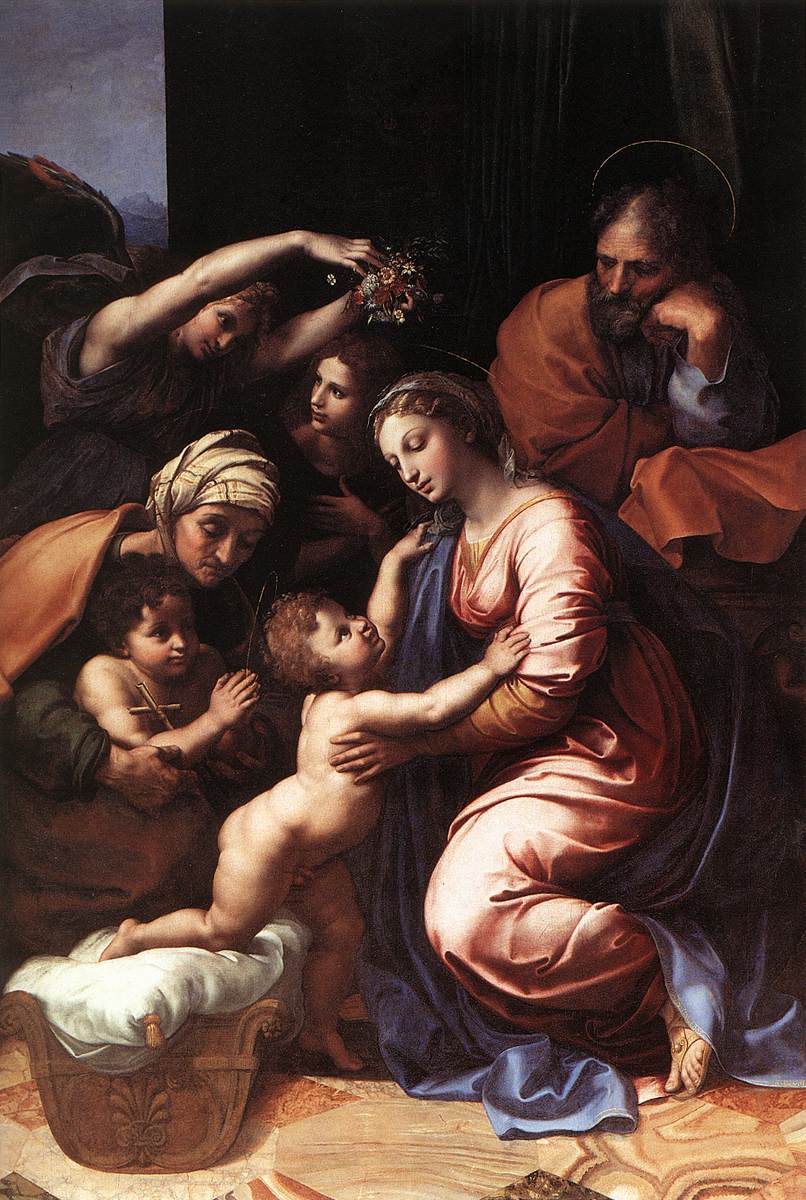The Madonnas that
Raphael painted
in Rome show him turning away from the serenity and gentleness of his earlier
works in order to emphasize qualities of energetic movement and grandeur.
His Alba Madonna (1508; National Gallery, Washington) epitomizes the serene
sweetness of the Florentine Madonnas but shows a new maturity of emotional
expression and supreme technical sophistication in the poses of the figures.
It was followed by the Madonna di Foligno (1510; Vatican Museum) and the Sistine
Madonna (1513; Gemäldegalerie, Dresden), which show both the richness
of colour and new boldness in compositional invention typical of Raphael's
Roman period. Some of his other late Madonnas, such as the Madonna of Francis
I (Louvre), are remarkable for their polished elegance. Besides his other
accomplishments, Raphael became the most important portraitist in Rome during
the first two decades of the 16th century. He introduced new types of presentation
and new psychological situations for his sitters, as seen in the portrait
of Leo X with Two Cardinals (1517-19; Uffizi, Florence). Raphael's finest
work in the genre is perhaps the Portrait of Baldassare Castiglione (1516;
Louvre), a brilliant and arresting character study.
Raphael's The Holy Family
Leo X commissioned this Holy Family with Elizabeth, the boy Baptist and two
angels, and gave it to Claude, the wife of the French king, Francis I. Although
it is signed RAPHAEL URBINAS, the picture is not autograph (entirely by the
artist's hand). Raphael delegated the work mainly to workshop assistants;
so the signature corresponds to a modern trademark.
raphael@art.artsmarket.co.uk

